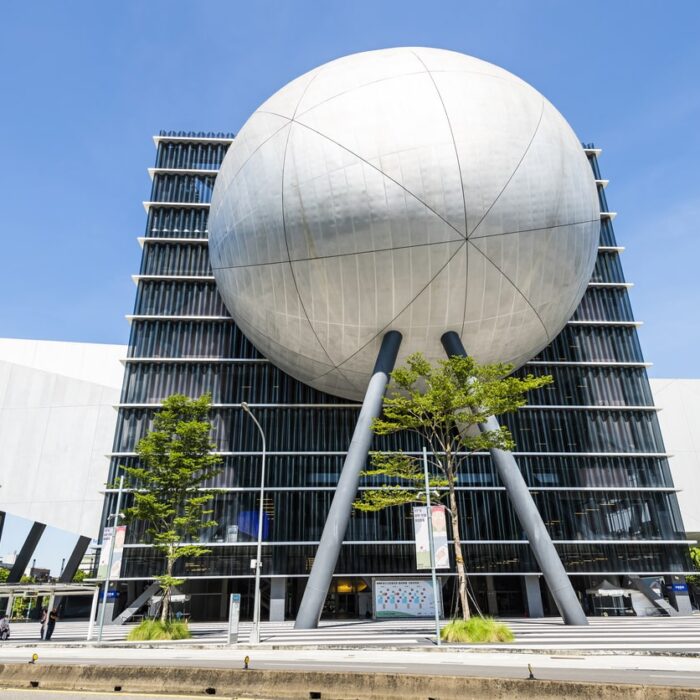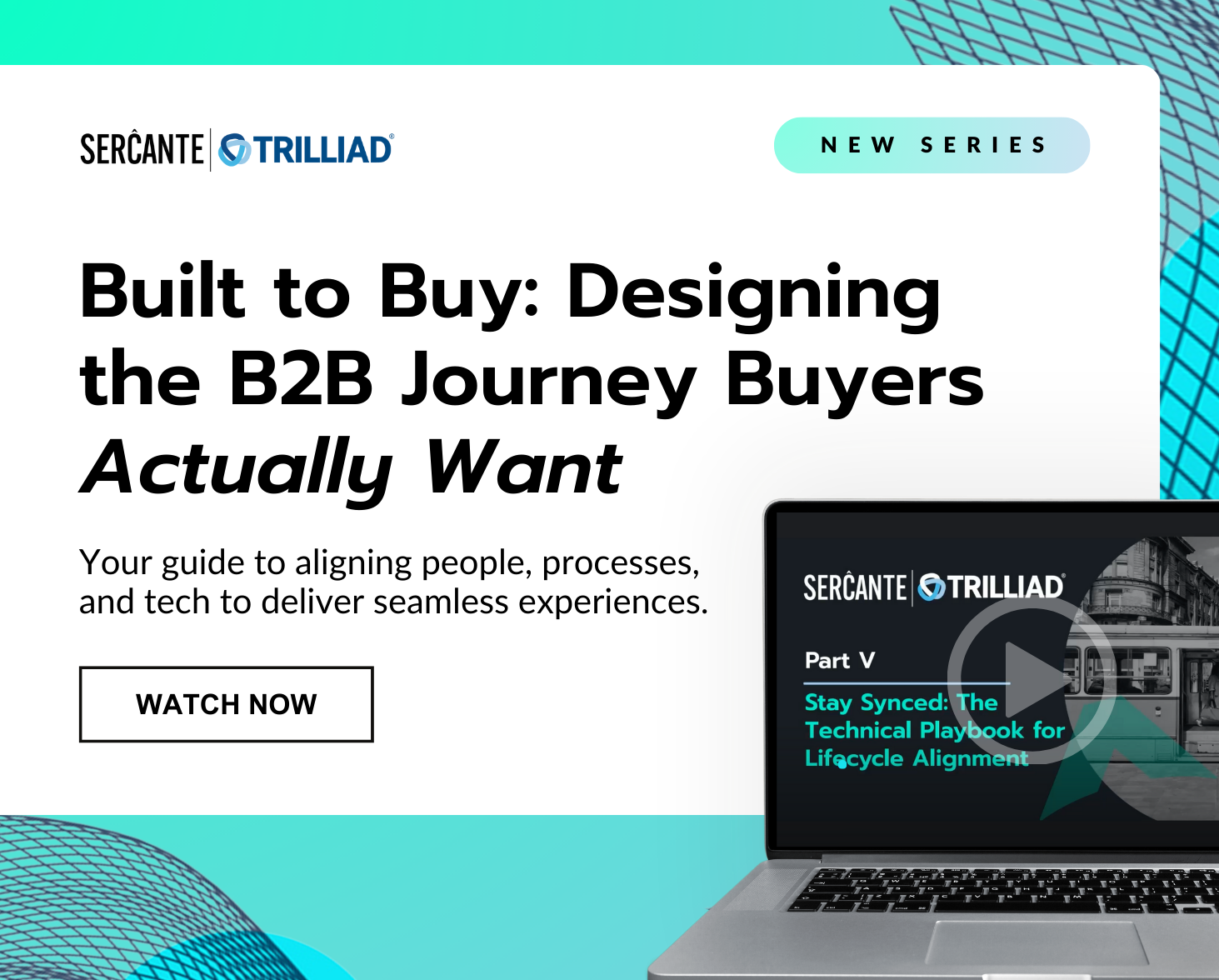Event marketing is a fantastic way to connect with your audience, build brand awareness, and generate leads. However, managing event marketing activities can take time and effort. That’s where Account Engagement can help — in more ways than you probably thought!
Salesforce Marketing Cloud Account Engagement (f.k.a. Pardot) can streamline your event marketing efforts from initial promotions and registrations to post-event follow-up and nurturing. In this post, we’ll explore how you can use Account Engagement for event marketing to ensure a seamless and impactful experience. We’ll show you which out-of-the-box tool(s) we recommend using at what time during the event process so you can maximize your efforts.
Using Account Engagement for Event Marketing: Planning and Promotion
A marketing event is only as good as the planning that goes into it. Ensuring you have your campaigns and other assets created in advance with a clear goal and structure in mind will dramatically improve the organization of your initiatives and enable consistent reporting down the road.
Here’s how to do that.
Set Up Your Event in Account Engagement (Pardot)
If you’re using Connected Campaigns, start by creating a campaign (or hierarchy of campaigns) in Salesforce for your event. This will help you track all marketing activities and ROI related to the event. You’ll then associate all your event assets (emails, landing pages, forms) with these campaigns later.
If you’re not using Connected Campaigns, then we highly recommend you read this blog post to understand the advantages of Connected Campaigns and how to enable the feature. Then, reach out to Sercante if you’re unsure of your next steps.
Create Your Campaign Structure
These are the steps to create your campaign structure:
- Navigate to Campaigns and click on + Add Campaign.
- Name your campaign using your organization’s standard naming conventions.
- Set default and/or custom fields, like cost, start/end date, and type.
- If it is a child campaign, select the appropriate parent to create your hierarchy
- Ensure your campaign is marked “Active” so it can sync with Account Engagement via Connected Campaigns.
Design Event Registration Forms
Now it’s time to design your forms to collect attendee information such as name, email, job title, and company.
- Under Content > Forms, click + Add Form.
- Ensure your form includes fields that are crucial for segmenting and personalizing follow-up communications.
Develop Event-Specific Landing Pages
Create engaging landing pages to capture registrations. These pages should highlight the event’s benefits, speakers, and agenda, and include a clear call-to-action (CTA).
- Navigate to Content > Landing Pages and click on + Add Landing Page.
- Choose a layout template that fits your event’s branding.
- Customize the page with relevant content and images.
- When prompted, select the form you created in the previous step.

Promoting Your Event
Develop Email Marketing Campaigns
After all, Account Engagement is an email marketing platform! Let’s use that core functionality to promote our event. Next, you’ll create a series of emails to promote your event.
Your campaign will include some form of the following emails:
- Invitations
- Reminders
- Last-chance registration prompts
- Follow-up correspondence with attendees
Some emails may be used as List Emails, while others may be automated sends using email templates.
I always recommend my clients have a comprehensive, universal email template on hand in their org. What I mean by that is a repeatable template that has lots of different sections for all types of emails. You’d clone this template, remove the sections you don’t need, and save.
On the right is an example of a Sercante Ultimate Email Template the team built for The Spot. It’s a common request our clients bring to us, so drop us a message if you don’t have a universal email template and want to get one.
Sending One-Off List Emails
If you’re sending a one-off List Email, follow these basic steps:
- Navigate to Account Engagement Email > List Emails and choose one of your published Email Templates.
- Modify your sections accordingly, while keeping consistent branding.
- Craft compelling subject lines and body content that convey the value of attending your event.
- Include a call to action, depending on the needs of the event.
- Make sure to always test before you schedule or send your emails. There’s a handy QA checklist in this blog post so you can hit the send button confidently.
Segmentation and Targeting
Use Account Engagement’s segmentation features to target specific audience groups with tailored messages.
- Go to Prospects > Segmentation Lists and create lists based on criteria such as past event attendance, industry, or engagement level.
- Use dynamic lists for criteria-based segmentation (i.e. location, job title, CRM status).
- Use static lists for manual segmentation (i.e. adding individual prospects to an invitation list).
Want to go a step further? Use social media connectors
Tap Account Engagement’s social posting capabilities to promote your event on LinkedIn, Twitter, and Facebook. You’ll need to set up your social media connectors under Account Engagement Settings > Connectors and log in to connect your social media accounts with Account Engagement.
Under Content > Social, you can create, manage, and schedule social posts. To complete the circle, you can insert CTAs in your posts that link back to your event landing page.
Managing Marketing Event Registrations with Account Engagement
Tracking Registrations
Forms
Use Forms to ensure all data flows into Account Engagement seamlessly. There’s a handy form style generator here you can use to customize your forms to match your branding.
- Navigate to Content > Forms and click + Add Form (or clone one you already have!)
- Map your fields to capture all necessary registration information.
- Ensure you customize your Completion Actions for autoresponders, assignments, campaign membership, etc.
Automation Rules for Registration Management
If Completion Actions don’t offer the functionality you’re looking for, consider creating Automation Rules to manage registrants.
Automation Rules allow you to automate actions such as adding them to a list, sending confirmation emails, or notifying your sales team when hot prospects or accounts are actively engaging.
- Go to Automations > Automation Rules and click + Add Automation Rule.
- Set criteria (i.e. form completion) and corresponding actions (ie. add to list, send email, update campaign member status).
- Once you’re ready to run it, make sure you “unpause” the automation rule.
Confirmation and Reminder Emails
For this, we highly recommend using Account Engagement’s automated nurture engine: Engagement Studio. This powerful tool comes out of the box with all MCAE editions.
Under Automations > Engagement Studio, you can create intelligent nurture programs to automate follow-up, update records and act immediately on interactions with your prospects.
Sending Confirmation Emails
Ensure that every registrant receives an immediate confirmation email with event details.
Reminder Emails
Schedule reminder emails leading up to the event to keep registrants engaged and reduce no-shows. Create a series of reminders — starting a week before the event, a day before, and a few hours before the start.
Event Marketing Doesn’t End There. Keep it Going!
You’ve made it to the day of your event! While your pre-event promotion is over, and your email invitations and reminders have all been sent, you can still use Account Engagement to engage with your prospects during and after the event, and throughout the sales process.
During the Event
Engaging Attendees with Personalized Content
Use Account Engagement’s dynamic content features to personalize the content displayed to attendees based on their profiles.
- Navigate to Content > Dynamic Content and create content blocks that change based on prospect data (i.e. industry, job title, location).
Real-Time Data Collection
Use Account Engagement’s tracking capabilities to monitor attendee interactions during the event, such as session attendance and engagement with event content. You can also implement tracking codes on event-related pages and materials to capture real-time data.
Feedback Forms
Create and send feedback forms immediately after each session to gather attendee insights and improve future events. This is a crucial step that will help your team continuously improve and build stronger relationships with your audience.
Post-Event Follow-Up
Analyzing Event Performance
Generating Reports
Use Account Engagement’s reporting features to analyze event performance, including registration numbers, attendance rates, and engagement metrics.
- Navigate to Account Engagement Reports to view detailed reports on your event’s asset performance (forms, landing pages, emails, etc.).
- You can filter and export data, or use other tools like Salesforce Lightning Reports or B2B Marketing Analytics for more advanced reporting and data visualization.
ROI Analysis
Calculate the ROI of your event by comparing the costs associated with the event to the revenue generated from leads and opportunities.
- Use Account Engagement’s ROI reporting tools under Reports > Marketing Assets.
Nurturing Leads
Follow-Up Emails
Create a series of follow-up emails to thank attendees, share event highlights, and provide additional resources. Use Engagement Studio to automate these follow-up emails for timely and relevant communication.
Lead Scoring and Grading
Update lead scoring and grading models based on attendees’ behaviors during the event.
- Go to Account Engagement Settings > Scoring to adjust scoring rules, and use this updated data to prioritize leads for sales follow-up.
Re-Engaging Non-Attendees
Post-Event Outreach
Don’t forget about those who registered but didn’t attend. Reach out with recorded sessions, summaries, and key takeaways to keep them engaged. Use segmentation lists to identify non-attendees and create a specific follow-up campaign for them.
Surveys and Feedback
Send a survey to non-attendees to understand why they couldn’t attend and gather insights to improve future events.
- Use Forms to create and distribute these surveys, and analyze responses to enhance your event strategy.
Planning Future Events
Reviewing Your Feedback
Incorporate feedback from attendees and non-attendees into your planning for future events to continuously improve the experience.
- Use Account Engagement Reports > Forms to analyze the feedback forms you’ve sent after previous events, and make data-driven decisions and adjustments to your approach.
Early Bird Promotions
Start promoting your next event early with exclusive offers and early bird discounts to previous attendees.
- Use Account Engagement Email to create and send promotional emails, and leverage Dynamic Content for personalized offers.
Now you’re an Account Engagement event marketing pro!
Using Account Engagement’s powerful features and capabilities, you can streamline every aspect of your event marketing activities, from initial planning and promotion to post-event follow-up and long-term nurturing. This ensures a seamless and impactful event experience and maximizes your marketing ROI and strengthens your relationships with prospects and customers.
Utilizing Account Engagement for event marketing can lead to more organized, efficient, and successful events, ultimately driving more meaningful interactions with your customers.
Wanna take a deeper dive into event marketing with Salesforce? Check out this blog post, 5 Event Marketing Best Practices To Implement For Your Next Campaign, which is a roundup of insights from seasoned event marketing professionals.









